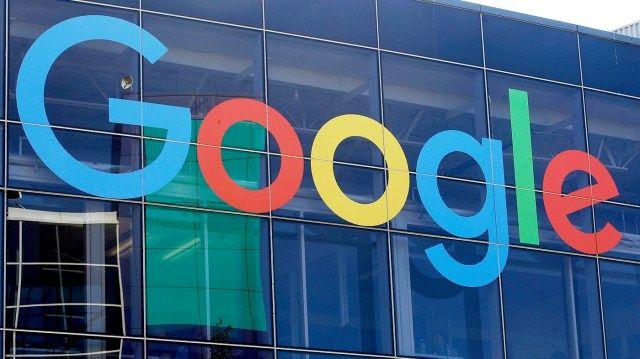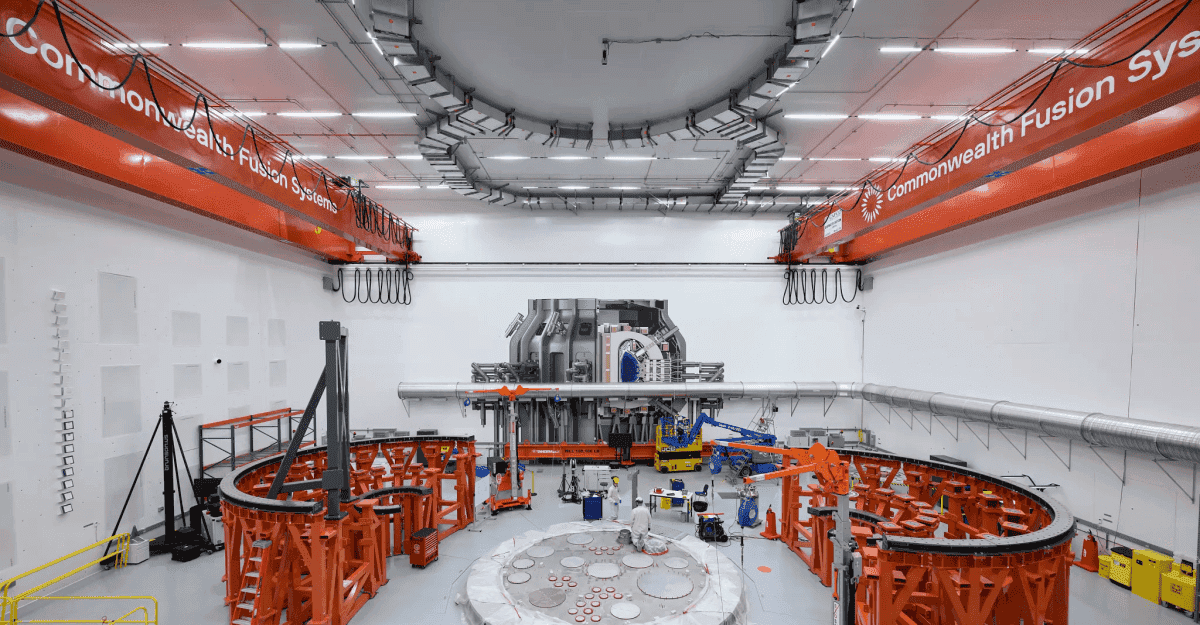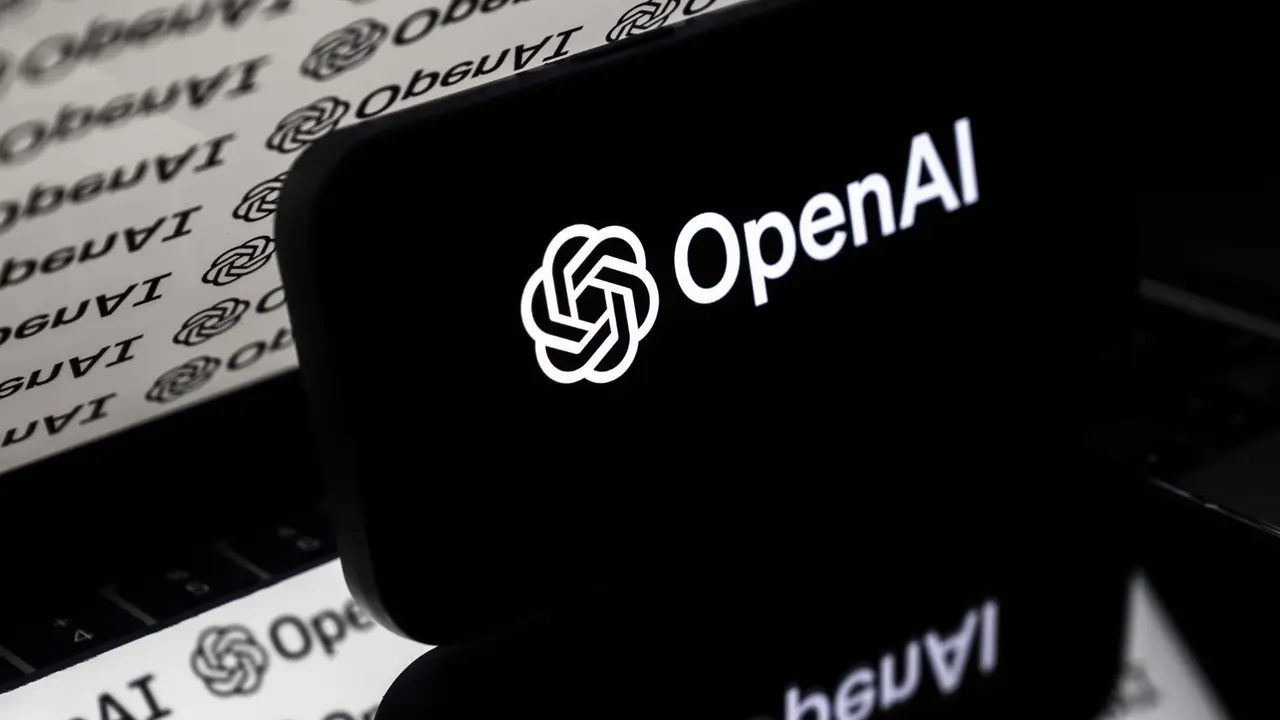Google Inks Landmark Deal for Fusion Power with Commonwealth Fusion Systems
6 Sources
6 Sources
[1]
Google inks its first fusion power deal with Commonwealth Fusion Systems | TechCrunch
Fusion power got another boost on Monday as Google announced it will buy half the output of Commonwealth Fusion System's first commercial power plant. Commonwealth Fusion Systems (CFS) will send Google 200 megawatts of electricity from its Arc power plant, which is expected to come online in the early 2030s. Meanwhile, Google is sending CFS a check as part of a new, unannounced funding round. The new round will be "comparable" to the previous one, CFS co-founder and CEO Bob Mumgaard said. CFS's most recent funding round, a Series B that Google participated in and that brought in $1.8 billion, closed in 2021. The company has raised the most of any fusion startup. "That's a very strong demand signal," said Mumgaard. "This investment allows us to do some of the R&D that will enable us to go into Arc faster." CFS is building a demonstration reactor, known as Sparc, just outside of Boston. That facility will be completed in 2026, according to Mumgaard. Arc, the company's commercial power plant, will be built near Richmond, Virginia. The new deal marks only the second time a major company has agreed to buy power from a fusion startup. The first was signed in 2023 when Microsoft agreed to buy the output of Helion's first commercial power plant, which is scheduled to come online in 2028. Like other hyperscalers, Google has been scouring the globe for new sources of electricity. AI and cloud services have ignited a surge in data center construction, driving a new wave of electricity demand along with it. One forecast expects that data center power demand will double by the end of the decade. "To power all this, we know that we're going to need to make big bets in this next frontier of energy innovation," said Michael Terrell, Google's head of advanced energy. Google thinks of its energy investments across three time horizons, Terrell said. In the short term, the company has prioritized solar, wind, and batteries. A bit farther out, it's betting on geothermal and small modular nuclear reactors, as evidenced by its investments in geothermal startup Fervo Energy and nuclear startup Kairos Power. Fusion energy is a bit further out, and that "would certainly put this [CFS investment] in the long term category," he said. Google bought 8 gigawatts of renewable power in 2024, twice what it puchased in 2023. And while solar, wind, and batteries have been the main additions to Google's portfolio in recent years, Terrell told TechCrunch that the company will need other power sources to allow its data centers to operate 24/7. "There's definitely a path with wind and solar and storage in regions where the resource is very strong," he said, citing places like the Midwest, which has consistent winds, and the Southwest, which has mostly cloud-free skies. But other places, like the Southeastern U.S. and many counties in the Asia-Pacific region might be too cloudy or their power grids too fragmented to make traditional renewables work. To compensate for those shortfalls, one approach is to overbuild wind and solar, but that can get expensive quickly. Technologies like fusion "actually bring the cost down of achieving high penetrations of carbon free energy," Terrell said. "If you have these clean, firm technologies -- even if they're more expensive on a per megawatt-hour basis -- if you're sort of folding those into the portfolio, it actually brings your overall portfolio costs down." Mumgaard is confident that CFS can deliver power to Google in less than a decade, and when that happens, he thinks that demand for fusion will skyrocket. "It doesn't depend on geography or weather, doesn't depend on access to special materials. It's something that you could run 24/7," he said. "We expect that fusion can have a really big payoff because once it's shown that you can do this and you have a first power plant up and running, you could scale it. You could build this around the world."
[2]
Google bets on fusion power as its greenhouse gas emissions grow
Justine Calma is a senior science reporter covering energy and the environment with more than a decade of experience. She is also the host of Hell or High Water: When Disaster Hits Home, a podcast from Vox Media and Audible Originals. Google has agreed to purchase electricity from a forthcoming nuclear fusion power plant, the so-called holy grail of clean energy that scientists have been chasing for more than half a century. While the fusion industry reached a significant milestone a few years ago, the technology has yet to prove whether it can be a technically feasible or commercially viable option. Nevertheless, the deal Google announced today shows confidence in the possibility of harnessing nuclear fusion to power its data centers. The news follows the release of Google's latest sustainability report on Friday, which shows its greenhouse gas emissions continuing to climb despite its clean energy commitments. Even in a best-case scenario, fusion reactors wouldn't be online in time to help Google meet its goal of slashing emissions by 2030. "It's a world-changing technology in our view," Michael Terrell, head of advanced energy at Google, said in a Friday call with reporters. "Yes, there are some serious physics and engineering challenges that we still have to work through to make it commercially viable and scalable. But that's something that we want to be investing in now to realize that future." Specifically, Google has agreed to purchase 200 megawatts of "future carbon-free power" from Commonwealth Fusion Systems (CFS), a private company that is building the fusion plant in question and in which Google is also an investor. Offtake agreements like this are common for other sources of electricity as a way to fund new projects. What's different here is that the timeline for nuclear fusion is far more uncertain. Nuclear fusion researchers are attempting to recreate the way stars generate their own light and heat. In our sun, hydrogen nuclei fuse together, creating helium and a tremendous amount of energy. If someone can figure out how to do that in a controlled way on Earth, they would unlock a potentially limitless source of carbon pollution-free energy. But doing so takes extreme heat -- more than 100 million degrees Celsius. With such high temperature and pressure requirements, scientists weren't even able to achieve a net energy gain from a fusion reaction until 2022. And so far, only the Lawrence Livermore National Laboratory has been able to do this. (Today's nuclear power plants generate electricity through fission -- releasing energy by splitting atoms apart rather than fusing them together; a process that leaves behind radioactive waste.) CFS says the technology is finally advancing fast enough to connect its first fusion power plant to the electricity grid in Virginia by the early 2030s. Virginia is also home to "data center alley," where tech companies have built or expanded facilities to develop new AI tools. Other energy experts The Verge has spoken to over the years, however, think it could take decades longer for fusion to become commercially available. CFS is currently building its pilot plant in Massachusetts. Google and CFS aren't alone in their ambitions. Microsoft inked a deal in 2023 to purchase electricity from a nuclear fusion generator being developed by Helion Energy, which is supposed to be ready by 2028. Around $8 billion from primarily private investors has flowed into fusion startups in recent years, the Washington Post reported last week. Google first announced an initial investment in CFS to support R&D back in 2021. It's now making a second capital investment, although the companies aren't disclosing any concrete numbers. Google has also been an investor in another fusion company, TAE Technologies, since 2015 -- although the recent deal with CFS marks Google's first offtake agreement for fusion. In 2021, Google pledged to reduce its planet-heating pollution by 50 percent by the end of the decade compared to a 2019 baseline. The company's latest sustainability report, however, shows that the its carbon emissions have actually ballooned by more than 50 percent since 2019 as it doubles down on AI. The 200MW deal with CFS represents a fraction of Google's carbon-free energy purchases. It says it has signed more than 170 agreements since 2010 to purchase 22,000MW of clean energy -- much of that in wind and solar projects that it sees as more feasible near-term solutions.
[3]
Google hedges bets on fusion future with Commonwealth PPA
Google has agreed to purchase 200 megawatts of fusion energy from Commonwealth Fusion Systems (CFS). That's assuming, of course, the Massachusetts-based startup can actually get the miniaturized sun to make more power than it consumes, something even the Chocolate Factory admits is a bit of a "moonshot." CFS's ARC fusion power plant is under development in Chesterfield County, Virginia, and is expected to produce about 400 megawatts of energy when fully operational sometime in the "early 2030s." Google says it's increasing its investment in the startup to accelerate this development, though an actual sum wasn't disclosed. The system itself won't surprise anyone who's been following fusion power over the past 80-plus years of research and development. CFS plans to use high-temperature superconducting magnets arranged in what looks a bit like a hollow donut. This design, often referred to as a Tokamak-style reactor, uses magnets to confine superheated plasma until it undergoes fusion, releasing energy in the process. Tokamak reactors have been around since the 1950s, but the trick is pulling more energy out of the system than what's required to start and maintain it. Up to this point, nobody has managed to build a net-energy-positive fusion reactor. The National Ignition Facility (NIF) at Lawrence Livermore National Laboratory is arguably the closest we've come. Unlike a Tokamak, the system used laser confinement to trigger fusion. In late 2022, the system generated 3.15 megajoules of fusion energy, exceeding the 2.05 megajoules delivered by the 192 lasers. The only problem is the energy required to actually fire the lasers far exceeded that at 322 megajoules. Nevertheless, fusion's potential as a source of clean, abundant, and safe energy is too tantalizing for tech companies as they race to build energy-hungry datacenters to train and run their AI models. Google was among a cadre of tech titans and venture capital firms that drove $1.8 billion in funding into CFS back in 2021. "Commercializing fusion is immensely challenging, and success is not guaranteed. But if it works, it could change the world by providing a more secure and clean energy future," the search giant wrote in a blog post. And they're not alone. You may recall that back in 2023, Microsoft threw its weight behind Sam Altman-backed fusion startup Helion, signing up to host a 50MW fusion power plant at one of its datacenters in Washington State. Helion's tech seeks to miniaturize the fusion process, using electromagnetic fields to accelerate plasma generated from deuterium hydrogen and helium-3 to speeds so fast they exceed 100 million degrees Celsius. By colliding two plasma blobs in the center of its field-reversed configuration (FRC) reactor, magnetic fields are produced, and energy is extracted through induction. This process is then repeated over and over again. The company has yet to produce more power than it consumes. With that said, the team remains confident they'll do it this year for sure. Neither Microsoft nor Google are putting all their eggs in a fusion-shaped basket. They're investing heavily in alternative energy sources ranging from wind and solar to more traditional fission nuclear power plants, both large and small. Microsoft is working with Constellation Energy to reignite the shuttered Three Mile Island Unit 1 reactor. Meanwhile, Google has tapped Kairos Power's small modular reactor (SMR) tech to supply it with power long term. It'll just be a while before they actually do. Kairos has yet to deliver a working reactor, nor has it obtained the regulatory approval necessary to field one. The first facility is slated for 2030 at the earliest with large-scale deployments expected by 2035. In the more immediate term, datacenter operators are stuck with existing power supplies, though Google is making investments in geothermal generation to offset the energy required to operate its datacenters in Nevada. Initially deployed as a 3.5 megawatt pilot, the deal has been expanded to add 115MW of power to the grid, some of which will go to Google facilities in the region. ®
[4]
Google strikes deal to buy fusion power from MIT spinoff Commonwealth
WASHINGTON, June 30 (Reuters) - Alphabet's (GOOGL.O), opens new tab Google said on Monday it has struck a deal to buy power from a project in Virginia fueled by fusion, the reaction that powers the sun and the stars but is not yet commercial on Earth. Google signed what it called the technology's first direct corporate power purchase agreement with Commonwealth Fusion Systems, a company that spun off from the Massachusetts Institute of Technology in 2018. The deal is for 200 megawatts of power, about enough to power a small city, from CFS's ARC project that is being developed in Virginia, home to the world's biggest hub of energy-hungry data centers. Financial details of the deal were not disclosed. Physicists at national laboratories and companies have been trying for decades to use lasers or, in the case of CFS, large magnets to foster fusion reactions, in which light atoms are forced together to release large amounts of energy. In 2022, the Lawrence Livermore National Laboratory in California briefly achieved net energy gain in a fusion experiment using lasers. But achieving so-called "engineering break-even," in which more energy comes out of a reaction than the overall energy that goes into a fusion plant to get a reaction going, has been elusive. And for a plant to generate power from fusion, the reactions must be constant, not rare. "Yes, there are some serious physics and engineering challenges that we still have to work through to make it commercially viable and scalable," Michael Terrell, Google's head of advanced energy, told reporters in a call. "But that's something that we want to be investing in now to realize that future." As artificial intelligence and data centers boost power demand around the world, interest in fusion is spiking. Fusion, unlike nuclear fission, in which atoms are split, does not generate large amounts of radioactive waste. In addition, fusion, if successful, could help fight climate change. CFS aims to generate power from the 400 MW project known as ARC in the early 2030s but must first clear the scientific hurdles. "Without partnership and without being bold and setting a goal and going for it, you won't ever reach over those challenges," Bob Mumgaard, CFS's CEO and co-founder, told reporters. He said the ARC plant will teach CFS about the "teething phase" of fusion, in which he expects to learn about how often fusion machines break down and how they can run reliably. Google also said on Monday it was increasing its investment in CFS, but did not disclose the amount. Google was one of many investors that invested a total of $1.8 billion into CFS in 2021. Mumgaard said Google's investment on Monday was "comparable" to its 2021 one. Reporting by Timothy Gardner; Editing by Paul Simao Our Standards: The Thomson Reuters Trust Principles., opens new tab Suggested Topics:Artificial IntelligenceGrid & InfrastructureNuclearClimate Change Timothy Gardner Thomson Reuters Timothy reports on energy and environment policy and is based in Washington, D.C. His coverage ranges from the latest in nuclear power, to environment regulations, to U.S. sanctions and geopolitics. He has been a member of three teams in the past two years that have won Reuters best journalism of the year awards. As a cyclist he is happiest outside.
[5]
Google strikes landmark nuclear fusion deal
Google will start harnessing power from a cutting-edge nuclear fusion company as it seeks to use cleaner energy for its artificial intelligence (AI) data centres. The search giant has agreed to buy 200 megawatts (MW) of power starting in the 2030s from US fusion start-up Commonwealth Energy Systems, which is planning a nuclear fusion plant. Google will also take part-ownership of the business, which previously raised $1.8bn (£1.3bn) in 2021 from investors including Bill Gates and Tiger Global, making it the best-funded private fusion business. Silicon Valley giants like Google have been hunting for new sources of clean energy as they seek to power AI data centre infrastructure. The race to build more powerful AI tools requires vast computing power from thousands of energy-intensive processors. A breakthrough in nuclear fusion would create a source of practically limitless clean energy, which could fuel the AI boom. Commonwealth, a spin-out from the Massachusetts Institute of Technology, is building a tokamak - a type of fusion reactor - that it calls "Sparc". It is planning to build power plants that can each generate 400MW of power, roughly the same as a typical natural gas plant, powering 280,000 homes. 'The world wants fusion' Scientists have spent decades attempting to crack fusion power, which mirrors the nuclear reactions that take place at the centre of the sun. Unlike nuclear fission, where atoms are split to release energy, fusion sees atoms forced together. Bob Mumgaard, Commonwealth's chief executive, said the deal with Google was a "strong signal that the world wants fusion" and that it would support "bringing fusion power to the grid at scale". Despite this, high-profile projects attempting to demonstrate the technology, such as ITER in France, have been long-delayed and are running billions of pounds over budget. While the financial terms of Google's deal were not disclosed, Axios reported earlier this year that Commonwealth was in the process of raising as much as $1bn. It is not the first time a tech company has agreed to buy as-yet unproven fusion power. Microsoft previously agreed to buy fusion power from US start-up Helion, which is backed by OpenAI founder Sam Altman. Helion is aiming to have a fusion plant by 2028. Amazon, Microsoft, Google and Facebook have all been in talks over nuclear power deals. Microsoft agreed to re-open a nuclear power plant at Three Mile Island in Pennsylvania to power its AI technology. Facebook also signed a deal that saved a nuclear plant in Illinois from closure. As well as conventional nuclear power, it has been considering investments in a new wave of advanced "small modular reactors". Last week, the UK announced £2.5bn of funding over the next five years to develop fusion power. As part of Labour's Industrial Strategy, the UK will work on building a tokamak prototype by 2040.
[6]
Google strikes deal to buy fusion power
Google has struck a deal to buy 200 megawatts of fusion power, as the tech giant struggles to reach its sustainability goals in the face of the growing energy demands of artificial intelligence (AI). The company announced Monday that it is partnering with Commonwealth Fusion Systems to offtake power from its first commercial plant in Virginia, which is set to bring 400 megawatts of power online starting in the early 2030s. "Fusion holds huge potential as an energy source of the future: it's clean, abundant and inherently safe, and it can be built just about anywhere," Michael Terrell, Google's head of advanced energy, wrote in a blog post. "Commercializing fusion is immensely challenging, and success is not guaranteed," he continued. "But if it works, it could change the world by providing a more secure and clean energy future." Fusion power, a form of carbon-free energy derived from fusing two nuclei, is an enticing alternative to nuclear fission, which is used to power traditional nuclear power plants but comes with drawbacks, such as the production of radioactive waste. Google's deal with Commonwealth Fusion Systems represents the second major fusion deal, following Microsoft's agreement in 2023 to purchase 50 megawatts of fusion power per year from Helion Energy starting in 2028. Major tech firms have increasingly turned to nuclear power as they seek to meet the vast energy demands of AI without adding to their emissions. Google also signed a deal with Kairos Power last fall to build a fleet of small modular nuclear reactors to power its data centers. The reactors, which rely on nuclear fission, are scheduled for completion between 2030 and 2035 and will produce 500 megawatts of power. In its annual environmental report released Friday, Google touted that it reduced its data center energy emissions last year by 12 percent. However, the company's overall emissions grew by 11 percent in 2024 and are up 51 percent since 2019, seemingly running counter to its efforts to become net zero by the end of the decade.
Share
Share
Copy Link
Google has agreed to purchase 200 megawatts of fusion power from Commonwealth Fusion Systems, marking a significant step in the tech giant's pursuit of clean energy for its AI-driven data centers.
Google's Landmark Fusion Power Deal
In a groundbreaking move, Google has announced a deal to purchase 200 megawatts of electricity from Commonwealth Fusion Systems' (CFS) first commercial fusion power plant
1
. This agreement marks a significant step in the tech giant's pursuit of clean energy sources for its expanding AI and cloud services infrastructure.
Source: The Hill
The Promise of Fusion Power
Fusion power, often referred to as the "holy grail" of clean energy, has been a subject of scientific pursuit for over half a century
2
. Unlike current nuclear fission reactors, fusion promises to provide limitless, carbon-free energy without generating long-lasting radioactive waste4
.CFS, a spin-off from the Massachusetts Institute of Technology, is developing a tokamak-style reactor that uses high-temperature superconducting magnets to confine superheated plasma
3
. The company aims to have its ARC fusion power plant operational in Virginia by the early 2030s1
.
Source: The Register
Google's Energy Strategy
Michael Terrell, Google's head of advanced energy, explained that the company views its energy investments across three time horizons
1
:- Short-term: Solar, wind, and batteries
- Medium-term: Geothermal and small modular nuclear reactors
- Long-term: Fusion energy
This diversified approach reflects Google's commitment to finding sustainable solutions for its growing energy needs, particularly as AI and cloud services drive up data center power demand
1
.Challenges and Uncertainties
Despite the excitement surrounding fusion power, significant challenges remain. The technology has yet to achieve net energy gain consistently, and commercialization timelines are uncertain
2
. Google acknowledges these hurdles but sees the potential payoff as worth the investment3
.Related Stories
Industry Trends and Competition
Google isn't alone in its pursuit of fusion power. Microsoft signed a similar deal with Helion Energy in 2023, agreeing to purchase electricity from a fusion generator expected to be ready by 2028
2
. This trend reflects the tech industry's growing interest in fusion as a potential solution to their increasing energy demands5
.Investment and Future Prospects

Source: The Verge
In addition to the power purchase agreement, Google is increasing its investment in CFS, though specific figures were not disclosed
4
. This follows a previous $1.8 billion funding round in 2021, in which Google participated1
.Bob Mumgaard, CFS's CEO and co-founder, sees the deal as a strong signal of market demand for fusion power. He emphasized the importance of partnerships in overcoming the challenges ahead
4
.As the race for clean, abundant energy continues, Google's investment in fusion power represents a bold bet on the future of energy technology. While success is not guaranteed, the potential rewards could reshape the global energy landscape and provide a sustainable solution for the growing power demands of the AI era.
References
Summarized by
Navi
[3]
[5]
Related Stories
Google Partners with Elementl Power to Develop Advanced Nuclear Energy Sites Amid Growing AI Power Demands
08 May 2025•Business and Economy

Tech Giants Turn to Nuclear and Renewable Energy to Power AI Ambitions
04 Dec 2024•Business and Economy

Google's $800M Clean Energy Initiative: Powering AI-Driven Data Centers with Renewable Sources
11 Dec 2024•Business and Economy

Recent Highlights
1
AI Chatbots Sway Voters More Effectively Than Traditional Political Ads, New Studies Reveal
Science and Research

2
Trump signs executive order to override state AI laws despite bipartisan pushback
Policy and Regulation

3
OpenAI warns upcoming AI models will likely pose high cybersecurity risk with zero-day exploits
Technology





